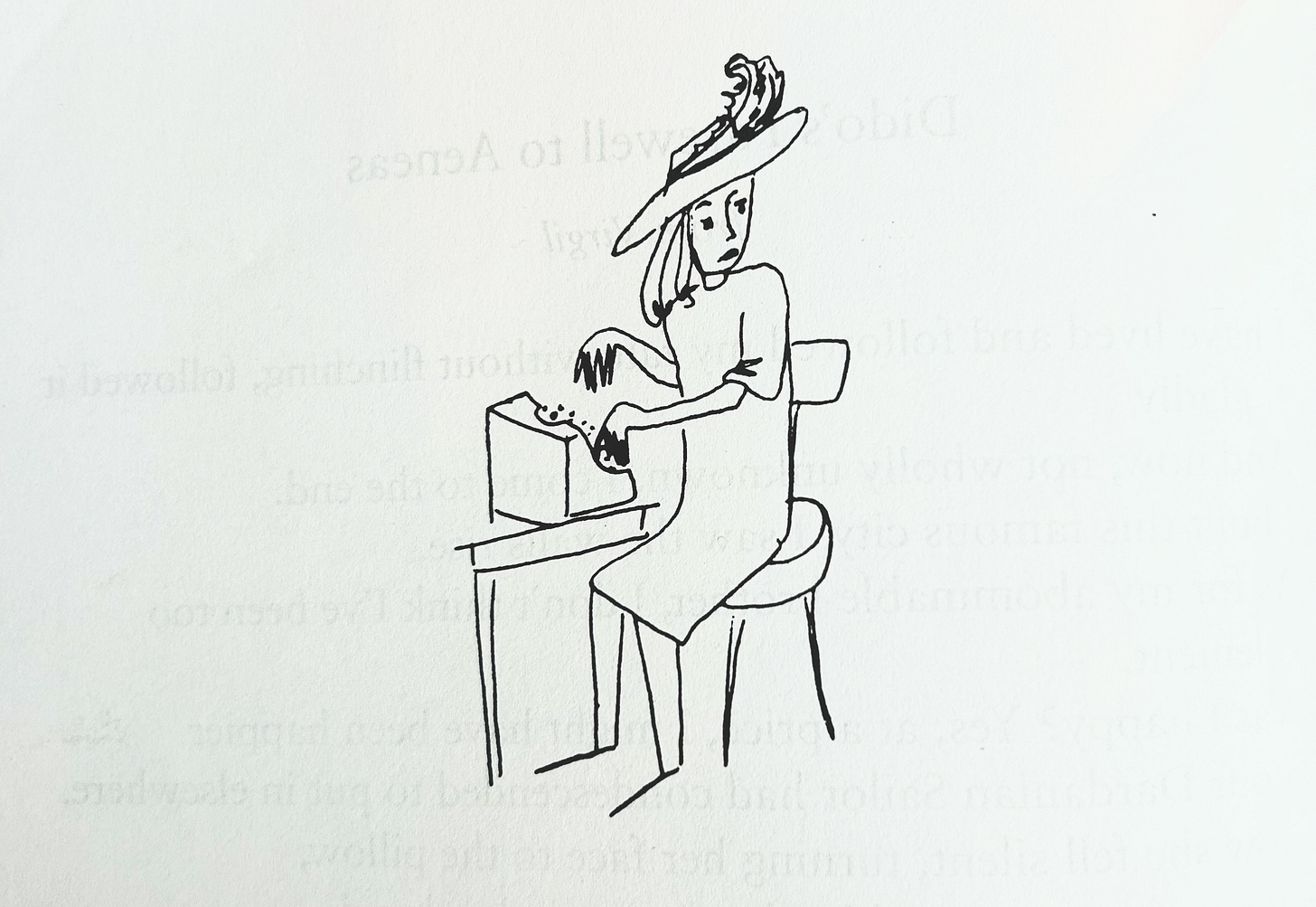
As this is the season of mists and submission deadlines, I’m sharing a couple of ideas for placing poems in journals and competitions. These are things that have worked well for me but never make the ‘how to get published’ lists. Perhaps you will find them helpful, too. What I really hope is that you will feel encouraged to follow your own inclinations, and submit your writing in a way that works for you, whatever everyone else is doing.
1. The hundred rejections strategy is not the only way
The hundred rejections challenge asks writers ‘to not only collect, but also to celebrate, 100 rejections throughout the year.’1 I do see the appeal. The sheer number of submissions bumps up your chance of landing a poem somewhere along the way, it’s galvanising and, if you really can make yourself aim for rejections rather than acceptances, you can’t fail. And people love it. In fact, it’s become so popular that we are in danger of forgetting that it’s just one idea and thinking of it as best practice.
There are many reasons why it is not for me. Not the least of these is the need for a spreadsheet to log and track those hundred rejections. There are places in my life for spreadsheets, even places around poetry, but not at the heart of it. Sending poems into the world to be read by another person, perhaps for the first time, is an immersive act. It’s not something I can hive off into a bureaucratic process. I’m not saying this is right or wrong, it’s just how it is for me. If I have to keep neat fiscal records, enter figures on a chart, and remember to check back and update, my ADD-leaning brain does not want to do poetry anymore. But — and this is really important — if it is for you, for goodness sake, keep doing it.

2. Submit as a way to get your poems read, not published (but they might get published, too).
This is my answer to the hundred rejections strategy. The object is to get your work read by a person whose writing, taste or critical opinion you value. That’s it. It’s nothing to do with publication, although that can be a lovely by-product. And look, you’ve already succeeded. You’ve sent it; they’re reading it. Well done you!
When I realised this was easy to achieve by submitting to poetry journals, it seemed a wonderful thing in itself. There are exceptions, of course; some journals use anonymous readers to filter submissions, but you can usually be sure that your poems will arrive on the desk or the screen of your esteemed editor. You’re not bothering anyone. It’s literally their job.
The same thing goes for competitions. It’s fine to be discerning. Who are the judges? Would you want them to read your poems even if they weren’t on this judging panel? If so, then the competition is a great way to make that happen. On the other hand, why submit your carefully written work to the scrutiny of someone whose taste or writing you, personally, don’t connect with however celebrated they may be?
One obstacle I can see with my ‘submit to be read’ approach is that it relies on simpatico writers holding editorial positions. This means there is likely some privilege built in.2 All I can say is to watch your poetry people, the ones who are going to the kinds of places, creatively, that you want to go. When they get an editorial role, pounce, consider it open season to hurl your work at them.3
And it’s no longer all about the big presses and journals. Small presses, micro presses and online journals are some of the best places to find and place poetry. My one submission this year was to a digital publication, because I’m interested in the editor’s taste and the kinds of readers they reach. The big presses and magazines are not the end of the story in the way they were.
3. Submit the unpublishable
It goes without saying you are going to submit the best work you’ve got. But when you are making up that little packet or document of four or six poems (read the guidelines like your life depends on it) you will have a choice to make about which to include along with your obvious ‘big hitters.’ And this is where you find the poem that, for whatever reason, you believe to be unpublishable. Perhaps it’s too light or daft or angry, or it came too easily; it’s ‘just’ a found poem or ‘just’ a parody or ‘just’ something else. Bung it in. It might give the editor a laugh. It might feel a little different from the rest of the mountainous slush pile they’re digging through. They are never going to publish it, of course.
But hang on a minute, you’d be amazed how often this is exactly the poem they go for. I don’t know why this is true, but I have heard other poets say the same thing. Perhaps you relaxed, took your hand off the brake, and something interesting happened despite your own best efforts.
This is what happened with my first ever published poem, which, like a dangerous maniac, I’d sent out to The Paris Review. I sent it because I had no idea what I was doing and because I admired the writing of the poetry editors, Charles Simic and Meghan O’Rourke.4 They wisely passed on five earnest offerings. Staggeringly, the sixth, an archaic, stagey oddity, was accepted.
And later de-accepted when a new editor binned a backlog of acceptances. Welcome to poetry!
Across the Atlantic, and in higher poetry circles than mine, there was a great furore. The poets whose work had been retrospectively rejected became known as the Rejecterinos. They demanded payment and publication. I distinctly remember picking a piece of lego out from between the floorboards thinking (not entirely unhappily), ‘I’m a Rejecterino.’ The Paris Review was forced to publish all the de-accepted poems on their blog, which means I can link to it here.
4. Laugh in the face of rejection
There’s a poet I know (hello, A!) whose response to a rejection letter is the miming of arse-wiping with said rejection = instant recovery.
It may not be helpful to say that I’m constitutionally sanguine about poetry journal rejections, but there it is. Once, a poet I knew slightly was guest-editing a literary magazine and reached out for a poem. Imagine me breezily sending off my latest effort. I hadn’t even had to submit in the usual way: new poetry level unlocked! Now imagine my surprise when the guest editor fired the poem straight back at me, horrified and appalled by what I had sent. The speed and vehemence of rejection struck me as very funny. I’d failed at something you could not fail at. Here’s a post on that poem in case you’d like to be appalled, too.
I’m not sanguine about everything in poetry. I’ve consistently failed to win Arts Council funding and I can never apply again, because it destroys me every time. We all have a thing that takes us out by the knees. My wish for you is that the thing that takes you out is not the submitting of poems to magazines and competitions.
And finally
Bonne chance this submission season! And, if you are looking for feedback on a journal, pamphlet or book submission, I can help. Do get in touch if you’d like to know more.
https://discover.submittable.com/blog/rejection100-is-collecting-100-rejections-in-one-year-join-us/
Just because you see simpatico connections between yourself and another writer, there’s no guarantee they feel the same, so you need to be okay with that. When Sylvia Plath sent her coastal poem to Marianne Moore, no doubt thinking, ‘she’ll love it. It’s right up her street,’ Miss Moore turned out to feel very differently. I mentioned this exchange in a previous post.
While following all the submission guidelines to the letter, of course. Let’s not lose our heads.
I was wrong about Charles Simic who had been replaced by the also excellent Dan Chiasson.





I read this a while back and only realized now that the idea of submitting to be read has already altered my whole feeling. All of this is helpful & sustaining.